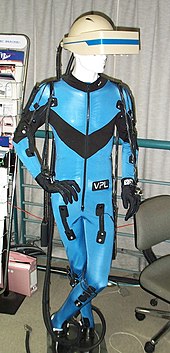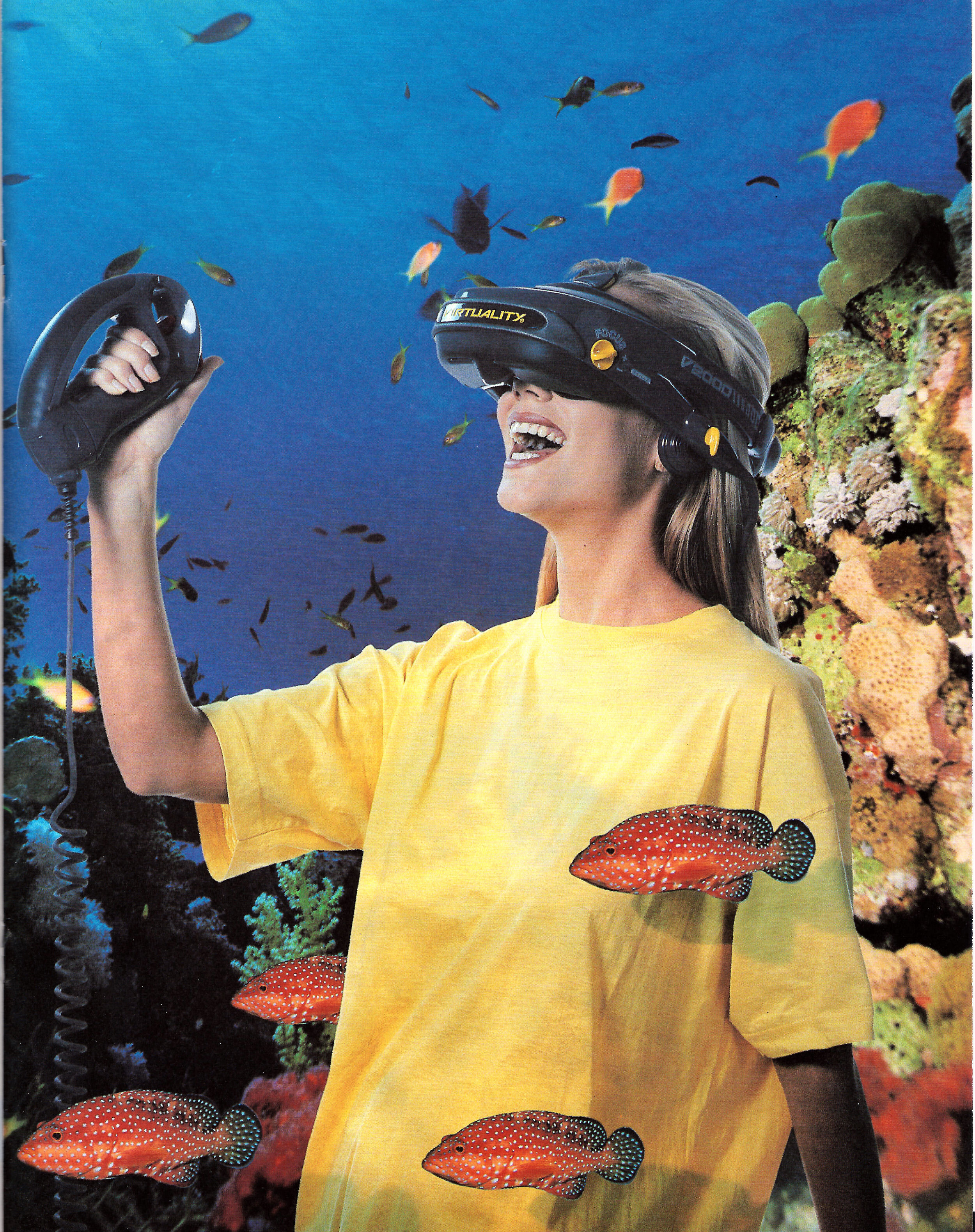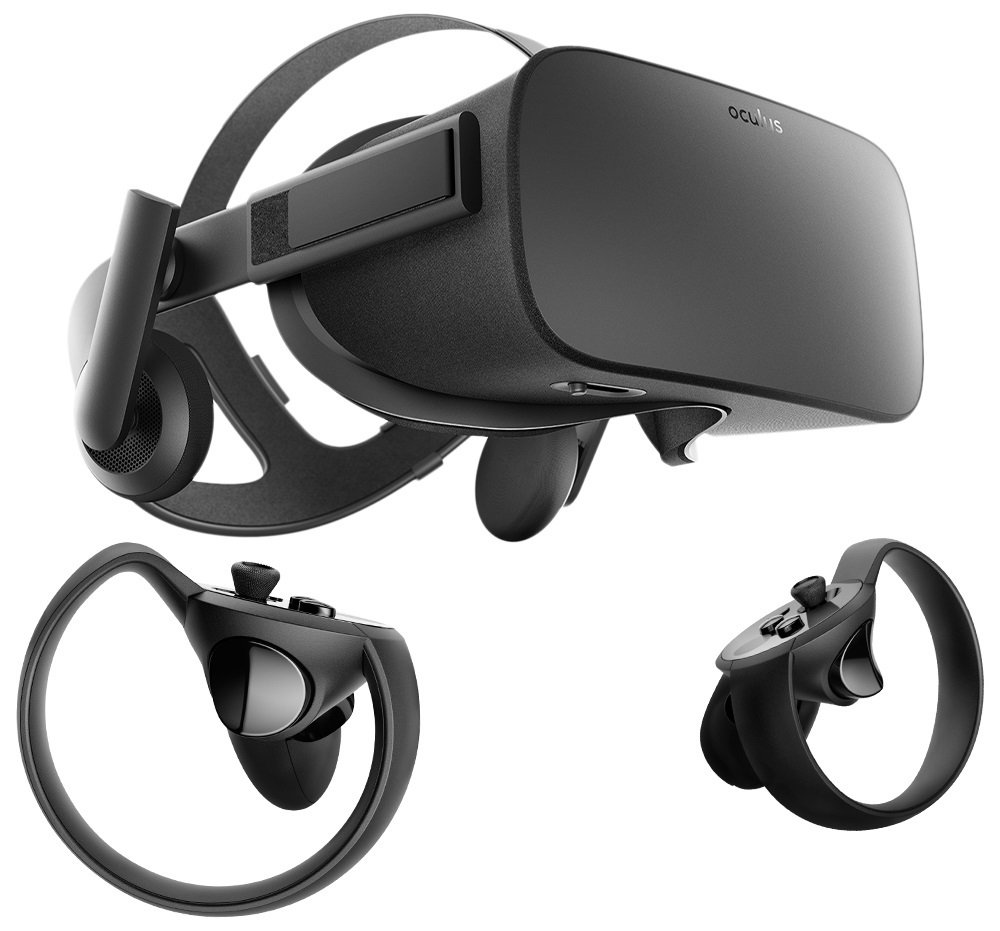A Brief History of VR
The term “Virtual Reality” is traced back to French playwright Antonin Artaud’s Le Théâtre et son double, in which he used it to describe the illusions of the theatrical space. The theatre could thus be considered very early iteration of VR, as the actors simulate an immersive reality for the audience, one which can even be interactive. The earliest example of something closer to our modern conception of VR, ie a digitally simulated experience, would be flight simulators. After World War 2 and amongst the panic of the Cold War, the United States military began producing flight simulators to train their pilots. The early models simply featured the user sitting in a fake cockpit, but in 1979, they began to use head-mounted displays similar to what we use now. (VIRTUAL REALITy)
 |
|---|
| A VPL Datasuit |
However, these were not yet considered “Virtual Reality.” That term was then first used to describe a fully digital simulated reality in The Judas Mandala, a somewhat obscure science fiction novel written by Damien Broderick in 1982. The term would not be popularized until the late 1980s, when VPL Research, a company started by Jaron Lanier, considered to be the father of VR, began producing virtual reality headsets. They would also produce the DataGlove, and sell the technology to Mattel, which they would market as the Power Glove. The Power Glove would be one of the first VR machines that was affordable and accessible to the everyday consumer.
| The Power Glove in The Wizard |
It was a controller accessory for the Nintendo Entertainment System (more commonly known as the NES) and claimed to enhance the user’s gaming experience. It would be heavily promoted in the 1989 film The Wizard.
The 90s saw a boom in Virtual Reality experimentation. A major advancement in the consumer market was when W Industries, a startup piloted by Dr. Jonathan Waldern premiered Virtuality in 1990.
 |
|---|
| Virtuality marketing material |
Virtuality was a line of gaming machines that allowed the user to don a visor and joysticks to experience an interactive digital environment. They were extremely popular in arcades across the world, and singled the possibility of a new era of virtual entertainment.(Horsman) Computer Gaming World magazine ran a story in 1994 entitled AFFORDABLE VR BY 1994 which began with the following:
When W Industries introduced its Virtuality system to the public, it took cyber-space out of the NASA labs and put it into the arcades. For the first time anyone with a few dollars could go out and try Virtual Reality and, at least in the beginning, a lot of people did. While the novelty of that particular system seems to have worn off, it's shown that VR represents an entirely new gaming medium rather than just a new game. (Engler, 81)
The article claimed that we would see home headsets widely available by the mid-90s, which was certainly attempted with the release of Nintendo’s Virtual Boy console in 1995. This came with a headset and controller to display “3D” using optical illusions. However, the technology was not quite ready for widespread home use, it turned out, as the product failed. Production was stopped in 1996, and only 22 games were ever released for the console. This failure was taken as a warning sign that neither the technology nor the average consumer was ready for such a product, and this, coupled with the dot-com bubble of the early 2000s mean that VR advancements were slim for the majority of the 2000s. (Edwards)
 |
|---|
| The Oculus Rift |
However, in 2010, Palmer Luckey created the first prototype for the Oculus Rift. This headset was lightweight, and allowed for the viewer to have a 90-degree field of vision. It was presented at E3 in 2012, and then purchased by Facebook for close to 3 billion dollars in 2014.(Rubin) This breakthrough prompted hundreds of companies to begin producing similar headsets, both from major players like Sony, Microsoft, and Google, as well as cheaper knockoffs. Over the next few years, hundreds of games were produced and redo-fitted to include VR. While these were technically available to everyone, their prices were in the hundreds of dollars, prompting the creation of budget headsets which just need the user to insert their phone as the screen.
The popularity of gaming headsets would stir interest in other possibilities within the world of Virtual Reality. In the latter half of the 2010s, we would see the rise in popularity of VR as a totally new medium, applicable to countless industries including pornography, therapy and business.(Lindner)
